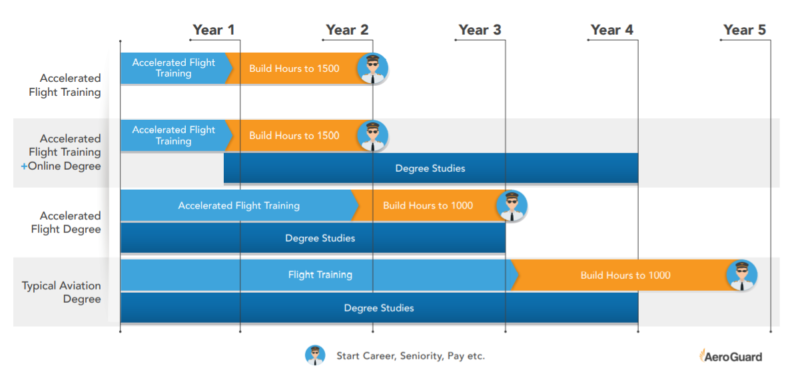Types of Flight Schools: Which Format is Best For You?
There are several routes an individual can take to launch their commercial airline career, and a variety of flight schools to attend. With the right knowledge, students will be able to determine which flight training program will work best for them and their aspirations.
Accelerated Flight School
This category of Flight School is an Accelerated Flight School, which as the name suggests does training at an accelerated rate, and typically offers the fastest route to a career with the airlines. Accelerated flight training provides students with a full-time, structured schedule focused specifically on flight training. It can be intensive and strict, so students must be prepared and dedicated to do well in this kind of environment. By avoiding typical semesters, other college workload, or working around individual schedules, students instread focus just on flight training to get it completed as quickly as possible. A popular alternative to the degree path, this program allows students to then apply to a university using their training as college credit and complete their degree online while already working as a Flight Instructor or Regional Airline pilot. This path can give the benefits of a degree, while maintaining a fast pace toward a career.
Aviation Degree Program
Historically, most airlines required a bachelor’s degree from their pilots, meaning the Aviation Degree Programs were a common path to provide both the flight qualification, and act as credit to an accompanying degree. However, with the forecasted pilot demand and shortage predicted by Boeing over the next 20 years, many airlines no longer require a degree to start your career. Students who complete an Aviation Degree Program, may receive a reduction in required flight hours to earn the Airline Transport Pilot (ATP) certification. The standard 1,500 hours can be reduced to 1,000 flight hours with a bachelor’s degree and 1,250 with an associate degree. However, the tradeoff for most students is the speed of their flight training, falling into typical semester periods, and taking 4 years to complete, before building flight time experience. One advantage of flight training within a Degree Program is that enables a student to take advantage of Federal Financial Aid to cover the costs of this flight training within the course.
Pay-As-You-Go Flight School
A Pay-As-You-Go Flight School is one in which the student effectively rents a plane, and an instructor and is able to pay and manage their schedule accordingly. With this type of flight school, you can training at your own pace and around your work schedule, which can be very convenient. However, for those looking to pursue a career in aviation, it can prove to be less than ideal and take longer to progress. Not having consistency in your training could lead to a lengthy timeline to finish, leaving room for forgetfulness and possibly the need for retraining, and adding further costs. Also depending on the other students at the school, you may be more alone in your career aspirations, having fewer people to study with or progress at the same speed.
Impact on Career Earnings, Pay and Seniority
Airlines operate on a system based on seniority, or a “rank for pilot scheduling as well as companywide Human Resources. Pilots who’ve been employed with an airline the longest have the highest seniority, while newly hired pilots have the lowest. Seniority affects scheduling, pay, quality of life and career advancement. Each of these flight training routes have an effect on seniority.
Accelerated Program
To reap the benefits of pilot seniority, you’ll want to begin training as quickly as possible. A career-track accelerated flight program can get you to the airlines sooner, so you’ll be able to increase your rank faster than if you went the pay-as-you-go route. Not only that, but seniority can also be powerful at the endo f your career when your earning power is its highest, so each year earlier to the airlines can increase total career earnings significantly.
Aviation Degree
While it may seem as though obtaining an R-ATP with a degree is quicker due to the lower hour requirements at 1,000 or 1,250 hours, it actually takes twice as long as students have to graduate either an Associate’s or Bachelor’s Degree. The lesser amount of flight hours might seem like a quicker path, but this tradeoff is not equal, as students are often compromising a handful of months of flight hours they amass as a salaried CFI for two more years of degree studying. This not only adds time for them to start their career but also costs more money and lowers their airline seniority.
Pay-As-You-Go Training
A pay-as-you-go training program may take longer to complete as it works around a students’ schedule and availability, it can have a negative impact on getting to an airline and building seniority. The longer it takes for you to finish your training, the lower seniority you will have at the airline throughout your career.


